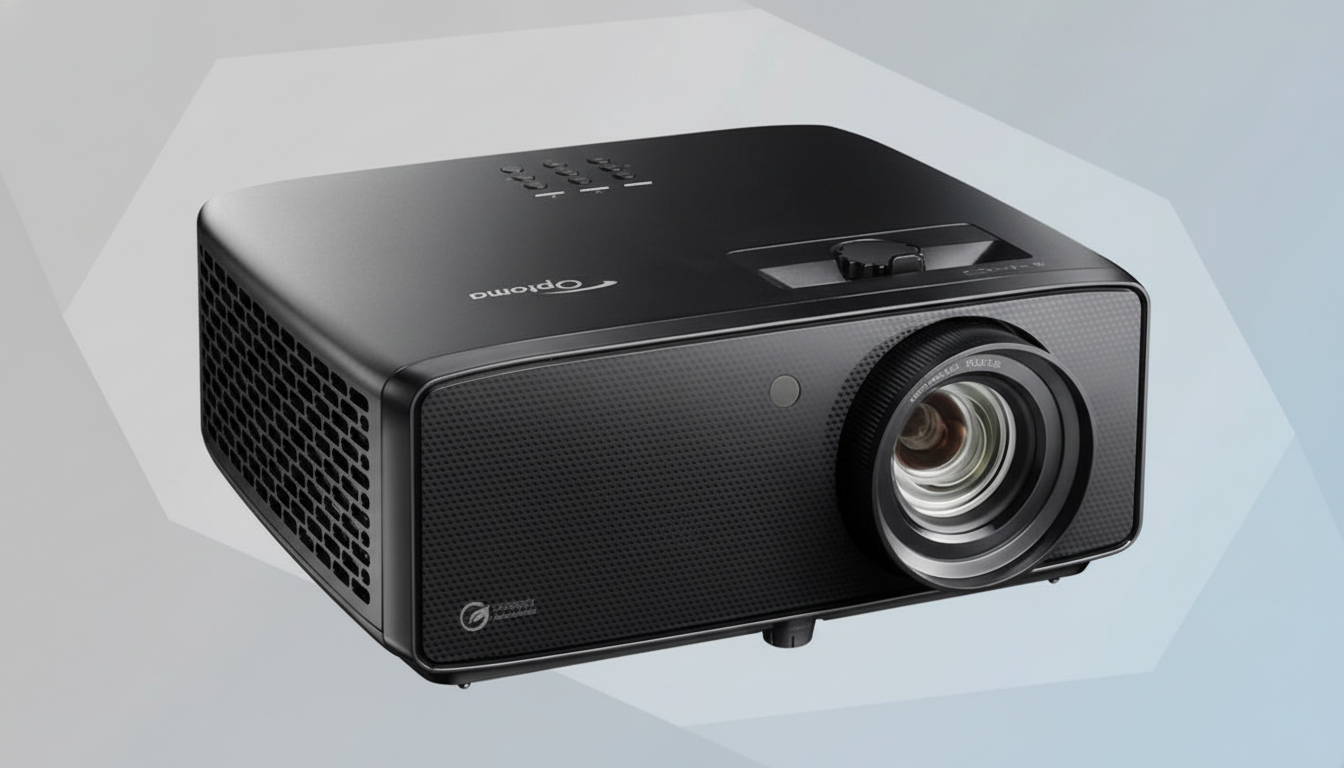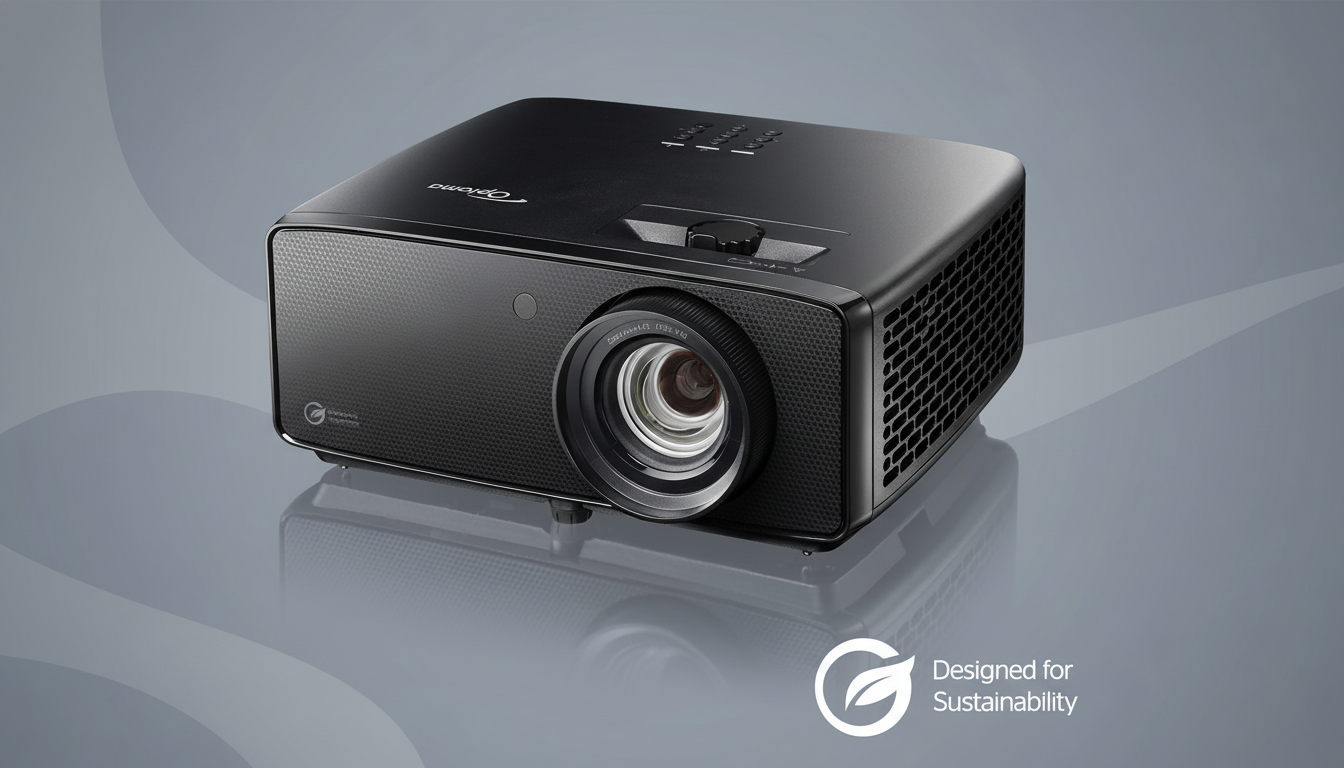Optoma has launched the UHZ58LV, a new 4K UHD laser projector designed to bring ultra-crisp and low-latency, movie-quality pictures in one throw. It appeals to home theater aficionados who also need a projector to keep up with fast-action multiplayer sessions, bundling HDR10+ support and wide color coverage with 240 Hz gaming at 1080p and input lag as low as 8.5 milliseconds.
Available for $2,299 in the US and £1,999 in the UK, the UHZ58LV is pitched directly at a performance sweet spot: substantial features without straying into custom-install pricing. On paper, it seems an eminently practical upgrade path for living rooms and dedicated theaters alike.

Cinematic Specs, With Corporate Flexibility
The UHZ58LV’s dual-laser light source pumps out up to 3,000 lumens and is also rated for up to 30,000 hours of life (much longer than lamp-based systems), which does a lot to keep total cost of ownership in check.
Optoma talks up 95% of the DCI-P3 color spectrum coverage, which is a vital bar to hit for any modern titles or streaming films in HDR, while you also get dynamic metadata from the HDR10+ format that should help preserve detail in both bright peak whites and deep black levels.
HDR10+ is still something of a rarefied presence in sub-$3,000 projectors, so it’s worth noting that it’s included here.
Even with that, brightness control still counts: industry guidance from SMPTE recommends around 16 foot-lamberts for dark-room cinema, and on a 120-inch 1.0-gain screen, a 3,000-lumen projector can comfortably achieve or exceed those levels prior to calibration. Real-world results will vary with room light and screen selection, but there’s headroom for a punchy image that doesn’t crush shadow detail.
Filmmaker Mode – championed by the UHD Alliance – also gets included, turning off ultra-aggressive motion processing and keeping your chosen frame rhythm for movies intact. That’s a useful checkbox for viewers and twiddlers that want to avoid the “soap opera effect” without diving deep into menu systems.
Built for Multiplayer Speed and Low-Latency Gaming
For gamers, the focus with the UHZ58LV is on responsiveness. In 1080p, it can ZOOM! up to 240 Hz at an input lag around 8.5 ms, which falls in a great space for a projector. Related: Independent testing labs such as RTINGS consider below 10 ms lag strong performance for fast shooters and racers, especially when combined with high refresh.
With HDMI 2.1 including eARC, you can pass through bitstream audio (like Dolby Atmos and DTS:X) via compatible receivers along with having bandwidth left over for modern game consoles.
It’s a similar premise to what competitive gamers have been after in the fast TV category, only scaled up for a large projection canvas so you don’t have to trade immersion against making sure that K/D ratio is intact.

Importantly, Optoma seems to do a good job of trading off speed for fidelity rather than sacrificing color accuracy and brightness to hit latency targets. A lot of “gaming-first” projectors pull back on image processing in order to reduce delay; here the potential is that movie night and ranked night can cohabitate the same hardware without XMB profile switching.
Setup That Adapts to Real Rooms and Installation Needs
Placement flexibility can be the difference between one projector and another, and the UHZ58LV goes all-in on it: 1.6× zoom, vertical lens shift, four-corner correction and even support for 360-degree orientation.
Lens shift is particularly welcomed, giving you that optical alignment without the resolution hit possible with aggressive digital keystone. For apartments, vaulted ceilings or any shelves that are not perfectly aligned — and even if more affordable than custom furniture in these long-term scenarios — it’s potentially the difference between a weekend project and an expensive contractor or a week of shouting.
Optoma also helps with ceiling-mounting itself or off-axis installs — a tip of the hat to all-purpose spaces in which you may have to work around normal furniture and illumination. It’s a stance that works with installations, meeting enthusiasts where they, you know, live — not just in showroom-perfect theaters.
Where It Fits in the Market of Home Projectors
At its price the UHZ58LV sits larger than compact lifestyle models but lower than dedicated pro-cinema rigs.
Consumers on the fence may also consider gaming-centric LED or laser models from BenQ and performance home theater units from Epson. For the comparisons, priorities will come into play here: where the BenQ X series might chase lowest possible latency, Epson’s higher-tier lasers often focus on brightness and lensing. Optoma is trying to thread the needle by delivering a (reasonably) credible cinematic viewing experience and solid gaming performance in one box.
ProjectorCentral and other industry watchers have been saying it for years: The best projector is the one that fits your room and habits. If your space has a lot of uncontrolled daylight, you’d be better off getting a brighter model. If what you are after is e-sports-quality reaction time above all, a faster, lower-resolution alternative might be more suitable. The UHZ58LV’s spec sheet checks the right boxes for most mixed-use setups — movies, sports, streaming and nightly multiplayer.
Bottom Line: A Versatile Projector for Mixed Use
The Optoma UHZ58LV feels like a well-judged answer to that age-old question of whether you should buy a projector for movies or one for gaming. With HDR10+, wide color, a robust dual-laser light engine, and 240 Hz with sub-10 ms lag at 1080p, it makes a compelling case for doing both — without the concessions we’ve come to expect. Pack in HDMI 2.1 eARC and forgiving installation options, and you have an adaptable centerpiece to a contemporary big-screen setup.

